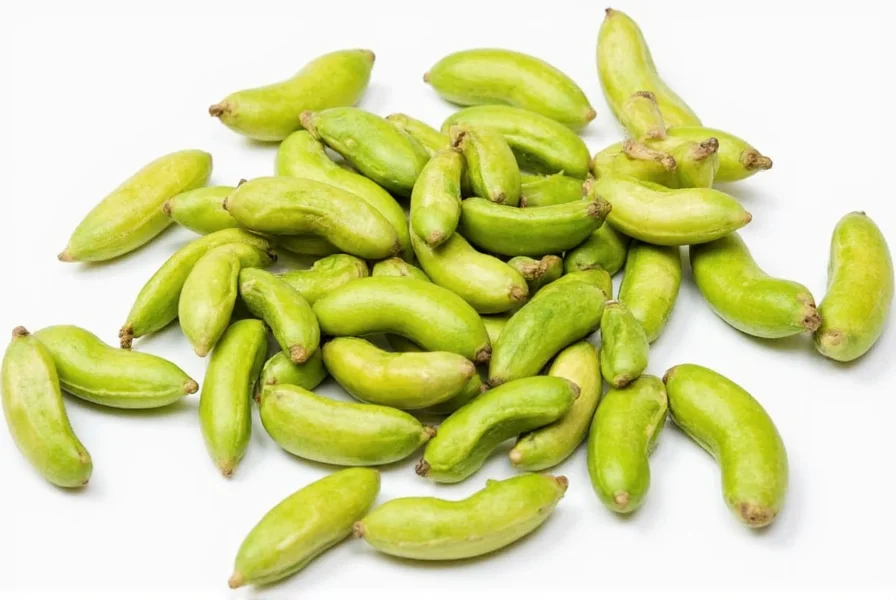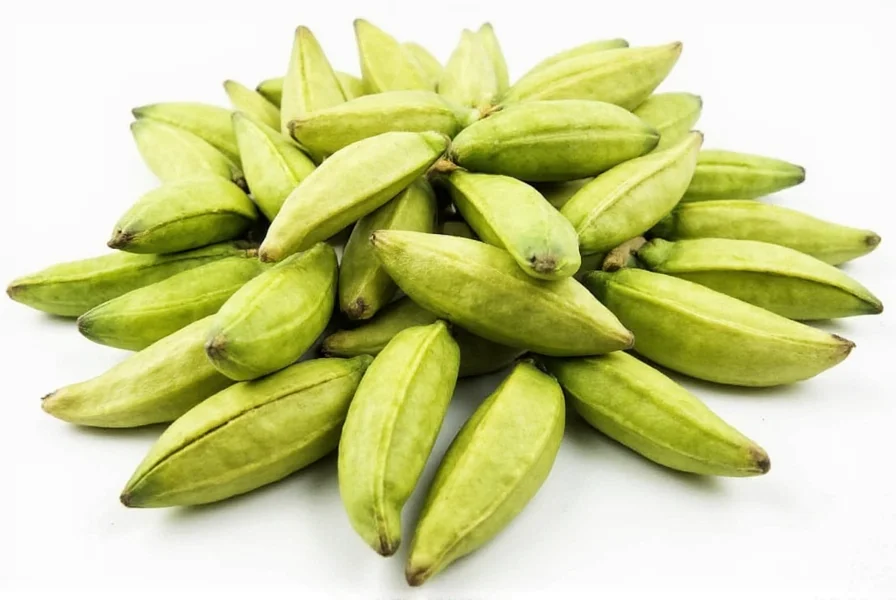Cardamom pods represent one of the world's most ancient and versatile spices, prized for their complex flavor profile that enhances both sweet and savory dishes. These aromatic capsules contain tiny black seeds that deliver a unique combination of citrus, mint, and warm spice notes that cannot be replicated by ground cardamom alone.
Understanding Cardamom Pod Varieties
Two primary varieties dominate culinary applications: green and black cardamom. Green cardamom (Elettaria cardamomum) grows in shady tropical environments and features a light green pod with a delicate, floral aroma. Black cardamom (Amomum subulatum) develops in cooler mountain regions, producing larger, darker pods with a distinctive smoky character from traditional drying methods.

| Variety | Appearance | Flavor Profile | Common Culinary Uses |
|---|---|---|---|
| Green Cardamom | Small, light green triangular pods | Floral, citrusy, slightly sweet | Baked goods, rice dishes, chai tea, Scandinavian pastries |
| Black Cardamom | Larger, dark brown to black pods | Smoky, camphorous, earthy | Indian curries, Chinese five-spice, hearty stews |
Maximizing Flavor from Cardamom Pods
Understanding how to use cardamom pods properly makes the difference between a subtle enhancement and overpowering dominance in your dishes. Professional chefs recommend lightly crushing pods before use to release essential oils while maintaining structural integrity during cooking. For baking applications, extract seeds by gently splitting pods and grinding them fresh for optimal flavor.
When substituting ground cardamom for pods, remember that 10 cardamom pods equal approximately 1½ teaspoons of freshly ground seeds. Pre-ground cardamom loses potency quickly, so whole pods provide superior shelf life and flavor intensity. This knowledge proves essential for anyone exploring authentic Indian, Middle Eastern, or Scandinavian recipes that specify cardamom pods rather than ground spice.
Proper Storage Techniques for Longevity
Maintaining cardamom pod quality requires specific storage approaches. Keep pods in airtight containers away from light, heat, and moisture. Whole pods retain freshness for 6-12 months when stored properly, significantly longer than ground cardamom which loses potency within 3-6 months.
For extended preservation, freeze cardamom pods in vacuum-sealed bags for up to two years without flavor degradation. Never store near strong-smelling foods as cardamom readily absorbs surrounding odors. Check pods periodically for dryness—fresh pods should feel slightly pliable, not brittle.
Culinary Applications Across Global Cuisines
Cardamom pods feature prominently in diverse culinary traditions. In Scandinavian baking, they flavor traditional breads like Finnish pulla and Swedish kardemummabullar. Indian cuisine uses green cardamom in biryanis and kormas, while black cardamom appears in robust meat dishes. Middle Eastern coffee often includes crushed cardamom pods for aromatic enhancement.
Modern chefs experiment with cardamom pods in unexpected applications: infusing syrups for cocktails, enhancing chocolate desserts, or adding complexity to roasted vegetable dishes. The key to successful integration lies in understanding how heat affects the delicate flavor compounds—add early in slow-cooked dishes but toward the end of quick preparations to preserve volatile aromatics.
Health Considerations and Nutritional Profile
Cardamom pods contain beneficial compounds including cineole, limonene, and terpinolene, which contribute to their distinctive aroma and potential health properties. Research suggests these compounds may support digestive health and provide antioxidant benefits. A single pod contains minimal calories but delivers trace amounts of magnesium, calcium, and fiber.
When exploring cardamom pod health benefits, remember that culinary use provides modest amounts compared to concentrated extracts. Consult healthcare providers before using cardamom pods therapeutically, especially if taking blood thinners or managing gallstone conditions.
Finding Quality Cardamom Pods
Selecting premium cardamom pods requires attention to several factors. Look for plump, intact pods with vibrant color—green pods should appear bright rather than yellowed, black pods should show deep color without excessive cracking. High-quality pods feel slightly heavy for their size, indicating seed density.
Avoid pods with visible mold, excessive dust, or broken seals. Premium cardamom often comes from specific regions: Malabar coast green cardamom from India, and Nepal black cardamom. When purchasing online, check harvest dates and storage conditions to ensure maximum freshness upon arrival.
Common Questions About Cardamom Pods
Can I eat cardamom pods whole?
No, cardamom pods themselves are too fibrous to eat. While the seeds inside are edible, the outer pod remains tough even after cooking. Chefs typically remove whole pods after flavor infusion or strain them from finished dishes.
How do I properly crush cardamom pods for cooking?
Place pods on a cutting board and gently press with the flat side of a chef's knife. Apply just enough pressure to crack the pod open without smashing the seeds. This releases essential oils while keeping seeds intact for controlled flavor distribution during cooking.
What's the difference between cardamom pods and cardamom seeds?
Cardamom pods contain the seeds and contribute their own subtle flavor compounds. Using whole pods provides a more nuanced, gradual flavor release compared to seeds alone. Pods work best in liquid-based dishes where they can steep, while seeds offer immediate, concentrated flavor for dry rubs or baking applications.
Can I substitute ground cardamom for cardamom pods in recipes?
Yes, but with adjustments. Use 10 cardamom pods = 1½ teaspoons freshly ground cardamom. Remember that pre-ground cardamom loses potency faster, so you may need slightly more. For best results, grind seeds from fresh pods rather than using store-bought powder when possible.
Why does my cardamom taste different from previous purchases?
Cardamom flavor varies based on harvest time, growing region, and storage conditions. Green cardamom from India's Malabar coast differs from Guatemalan varieties. Exposure to light, heat, or moisture degrades flavor compounds. For consistent results, purchase from reputable suppliers with high turnover and store properly in airtight containers.











 浙公网安备
33010002000092号
浙公网安备
33010002000092号 浙B2-20120091-4
浙B2-20120091-4